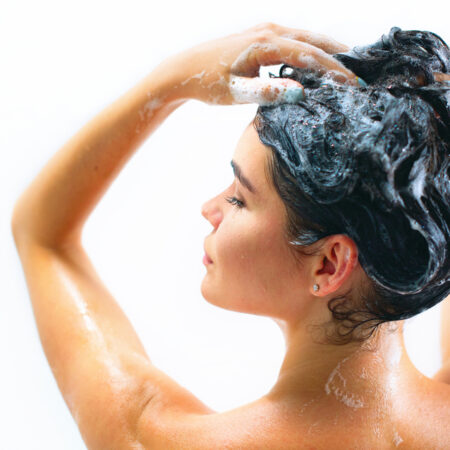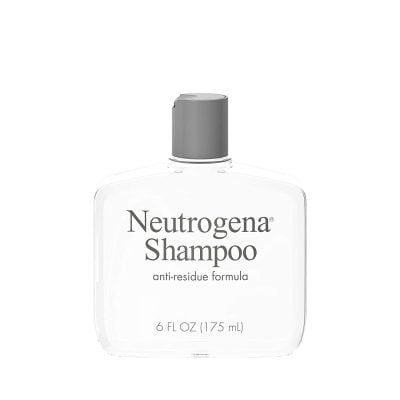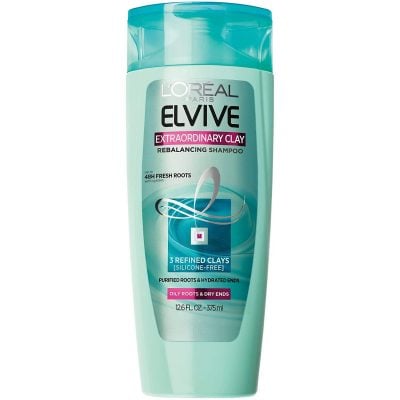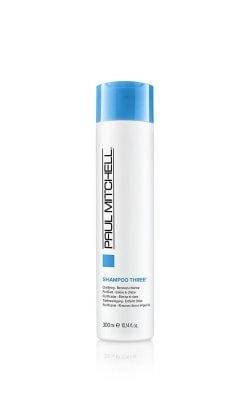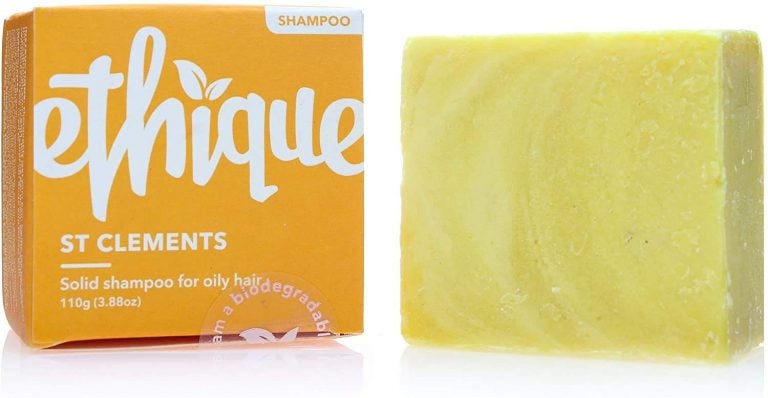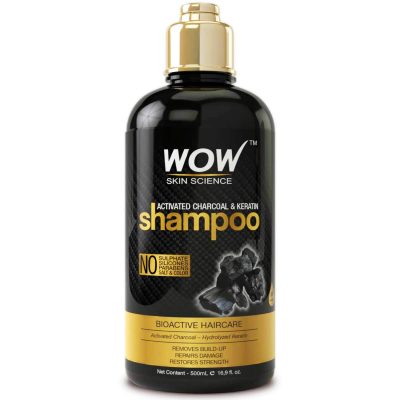We’ve all heard that washing our hair practically every day does us no favors and encourages more oil production. But will that stop us from wanting to look clean and presentable when we go about our daily business? Hardly.
When you’re cursed with an oily mane, you’re stuck between a rock and a hard place – leave the house every day looking like somebody dipped your head in a pot of Vaseline, or continue to damage your hair by overloading it with products?
This sad state of affairs might not exactly be the pinnacle of suffering, but it can certainly feel like it when your roots are already looking oily after washing them just twelve hours ago.
Getting the right shampoo won’t (necessarily) solve all your woes overnight, but it can certainly be an excellent first step toward recalibrating your hair. Just make sure to choose the right product!
- What to Look for in Shampoos for Oily Hair
- Top 10 Best Shampoos for Oily Hair 2025
- 1. Best Overall Shampoo: Neutrogena Anti-Residue Clarifying Shampoo
- 2. Best Budget Pick: L’Oréal Paris Elvive Extraordinary Clay Rebalancing Shampoo
- 3. Best Premium Pick: Paul Mitchell Shampoo Three
- 4. Best for Color-Treated Hair: BIOLAGE ColorLast Shampoo
- 5. Best Shampoo Bar: Ethique St Clements Shampoo Bar
- 6. Best Anti-Dandruff: Maple Holistics Moisture Control Shampoo
- 7. Best Shampoo for Damaged Hair: WOW Activated Charcoal and Keratin Shampoo
- 8. Best Daily Use Shampoo: Aveeno Apple Cider Vinegar Blend Shampoo
- 9. Best Volumizing Shampoo: HONEYDEW Volumizing Shampoo
- 10. Best for Fine Hair: BIOLAGE Volumebloom Shampoo
- Guide to Finding the Perfect Shampoo for Oily Hair
- How Often Should You Wash Your Hair?
- Types of Surfactants
- Should I Choose a Natural Shampoo?
- Choosing a Shampoo for Curly Hair
- Choosing a Shampoo for Color-Treated Hair
- Choosing a Shampoo for Hair With Dandruff
- Choosing a Shampoo for Fine Hair
- Choosing a Shampoo for Damaged Hair
- Should I Use Dry Shampoo?
- FAQs
- Time to Go Treat Yourself
What to Look for in Shampoos for Oily Hair
Hopefully, you already know a thing or two about what shampoo is and how it works. But what about shampoos for oily hair? What makes them effective at tackling grease, and how can we choose between them?
Fear not – we’ll answer all your questions
Surfactants
One of the principal differences between a shampoo for oily hair and a regular shampoo is the concentration of surfactants, also known as active matter: ingredients that cleanse strands to remove the oil.
Surfactants give shampoos their lathering, soapy texture. They can be overly stripping for anyone with dry hair, but they’re excellent for successfully cleaning grease.
Sodium laureth sulfate (SLS) is one of the most common types of surfactants found in shampoos. It might have a bad reputation for being toxic, but if you have greasy hair, you might find that the pros outweigh the cons. You can find more about SLS and other surfactants in our detailed overview.
Types of Shampoos
A shampoo, is a shampoo, is a shampoo, right? Not quite. There are “regular” shampoos that try to do everything at once, but you’ll also encounter three more specific types: clarifying shampoos, moisturizing shampoos, and chelating shampoos.
Clarifying shampoos are the most potent; they remove all products from your hair. They contain more surfactants than your average shampoo – 13-17% compared to the usual 10-15%. But they’re certainly not suitable for using every day – use them once a week (or twice at most).
If you need to wash your hair more often, opt for daily use shampoos, which have a 7-10% concentration of surfactants.
A chelating shampoo is for removing the hard water minerals that come from hard water, plus chemicals and toxins from pool water. These are even more drying than clarifying shampoos.
Finally, moisturizing shampoos are for keeping dry hair looking shiny and hydrated. If you have greasy hair, steer clear – but if you struggle with dry ends, you might find that some hydration is helpful.
Hair Type
Even among oily-haired types, we’re all a little different. You need to take extra considerations if your hair is color-treated, damaged with split ends, very fine, or if you have dandruff.
There are also some shampoos built for those with coarse, or curly hair – but, since curly hair is almost always dry, these shampoos tend to be moisturizing rather than cleansing.
Ingredients
Although surfactants are the most important component for tackling grease, that doesn’t mean you can discard everything else on the ingredients list. Some people like to avoid ingredients like parabens, silicones, and other chemicals in their shampoos since they can irritate your scalp.
If you’re unsure whether to opt for a natural or chemical-based shampoo, check out our detailed breakdown.
Texture
The best way to figure out what type of shampoo you’re dealing with is to go through the ingredients list with a fine-toothed comb and figure out whether it’s the one for you. But the second-best way is to take a look at the texture and make an educated guess.
Moisturizing shampoos tend to have a creamier, thicker texture, while stronger shampoos with more active ingredients (like those designed for people with greasy hair) are usually clearer and lighter.
Cruelty-Free
It’s no little-known secret that cosmetics brands are notorious for testing on animals. If you’re a vegan or you’re trying to be mindful of your consumption habits, look out for cruelty-free products.
We hope you’ve been taking notes, because it’s now time to take a look at the best shampoos. Whether you want something high in surfactants or natural ingredients, if your hair is color-treated or dandruff-ridden, we have you covered.
If this doesn’t apply to you, be sure to check out our other shampoo guides like the best organic dry shampoos, the best shampoos for permed hair, and the best shampoos for hard water.
Top 10 Best Shampoos for Oily Hair 2025
1. Best Overall Shampoo: Neutrogena Anti-Residue Clarifying Shampoo
Editor’s Rating:
Quick Facts:
- Size: 6 Fl Oz
- Hair type: All types (including color-treated hair)
- Shampoo type: Clarifying
- Texture: Thick, foamy
- Scent: Mild orange
- Cruelty-free: No
- Free from: Artificial dyes, colorants, and silicones.
Want to get rid of that horrible grease and the traces of previous shampoos lingering in your hair without using a product so harsh that it irritates your scalp? Of course you do, and that’s exactly what Neutrogena provides.
The formula promises to get rid of 90% of residue in your locks, boosting volume and restoring shine – yet it’s also gentle enough for color-treated hair and anyone with sensitive skin.
The only downside is that you can’t use it every day. As a clarifying shampoo, it’s only designed for using once a week – complement it with a gentler shampoo if you need to wash your hair more often than that (which, as an oily-haired individual, you almost certainly do). We recommend the Aveeno daily use shampoo.
Ingredient Quality
Neutrogena prides itself on being the #1 Dermatologist Recommended skincare brand, so you can count on it to vet their ingredients carefully. The anti-residue formula contains no artificial dyes or colorants (although it does have synthetic fragrances).
However, as a clarifying shampoo made to strip your hair of residues, it does contain some harsh ingredients. Sodium laureth sulfate is the second largest ingredient, which is a harsh surfactant. It also contains the weaker surfactant cocamidopropyl betaine.
However, that’s why this is a once-a-week shampoo for a deep cleanse and not designed for daily use.
Other than a few harsh substances designed to give the hair a deep cleanse, in general the ingredients list is very simple. It contains only eleven substances and no silicones. There’s glycerin to moisturize the hair and prevent it becoming too dry after being stripped.
Pros
- Non-irritating
- Simple and minimal ingredients
- Strong enough to remove hair products and grease
Cons
- Not cruelty-free
- Contains fragrance
2. Best Budget Pick: L’Oréal Paris Elvive Extraordinary Clay Rebalancing Shampoo
Editor’s Rating:
Quick Facts:
- Size: 12.6 Fl Oz
- Hair type: Dry ends, color-treated hair
- Shampoo type: Regular
- Texture: Thick and creamy
- Scent: Floral
- Cruelty-free: No
- Free from: Silicones
Some people float through life looking permanently like they’ve just left the salon, with luscious locks and not a split end or spot of grease in sight. Others are less fortunate, battling not just oily hair but also dry strands. Life isn’t fair, but products like the L’Oréal rebalancing shampoos can accomplish a task you’d expect to be impossible: tackling both problems at once.
The shampoo promises to keep your roots looking clean for 48 hours, while a few magic ingredients will nourish any dryness.
Ingredient Quality
L’Oréal markets the shampoo as containing three refined clays. Clay is an excellent absorbent of oil, toxins, dirt, and everything in between. It can even help to fight dandruff and hair loss.
As well as clays, it also contains salicylic acid, a known moisturizing ingredient that helps to loosen dead, irritated skin.
It contains sodium laureth sulfate and cocobetaine glycol as surfactants, making it so effective as a cleanser. But this might not be suitable for more those with more sensitive scalps, especially since it also contains artificial fragrance. Consider a hypoallergenic option like the Maple Holistics shampoo instead.
Pros
- Very affordable
- Great for dry or split ends
- Clay helps cleanse hair
Cons
- Cruelty-free
- Harsh ingredients
Editor’s Rating:
Quick Facts:
- Size: 10.14 Fl
- Hair type: All
- Shampoo type: Chelating and clarifying
- Texture: Thin gel
- Scent: Grapefruit and orange
- Cruelty-free: Yes
- Free from: Parabens
Paul Mitchell is a renowned brand for professional haircare products, and Shampoo Three is no exception. As a chelating shampoo, it’s capable of getting chlorine, iron, and minerals out of your hair. It’s also clarifying, helping with product buildup and the resulting dullness, including dyes and color treatments lingering in the hair.
Although the price tag is higher than other items on the list, it’s one of the few shampoos out there that is both chelating and formulated specifically for oily hair. If you’re a swimmer or the hard water from your faucets doesn’t agree with your hair, this should be a no-brainer.
Oh, and did we mention it’s also cruelty-free and vegan?
Ingredient Quality
Unlike many clarifying shampoos, the principal surfactant in Paul Mitchell Three is disodium cocoamphodiacetate, a gentler option that is less likely to irritate your scalp. It also contains sodium laureth sulfate, but in a lower concentration than many other shampoos.
To get chlorine and other toxins out of your hair – which manifest as green or yellow clumps – there are a few special ingredients. There are various sources of ethylenediaminetetraacetic acid (EDTA), which attach to trace minerals and get them out of your hair for extra cleansing.
There’s also magnesium sulfate, a natural curl activator that you might also know as Epsom salts. It’s great for improving the appearance of your hair or anyone with curly hair.
Pros
- Chelating
- Vegan and cruelty-free
- Suitable for color-treated hair
- No parabens
Cons
- Contains sodium laureth sulfate
- Expensive
4. Best for Color-Treated Hair: BIOLAGE ColorLast Shampoo
Editor’s Rating:
Quick Facts:
- Size: 33.8 Fl Oz
- Hair type: Color-treated
- Shampoo type: Regular
- Texture: Creamy
- Scent: Muted
- Cruelty-free: No
- Free from: Parabens
Although most manufacturers claim their shampoos are suitable for color-treated hair, you might want to err on the side of caution. Strong shampoos – especially clarifying or chelating shampoos – can remove the color from your hair. Good if you have lingering hints of hair dye that you want to grow out; not so great if you just put in some blonde highlights.
The BIOLAGE ColorLast shampoo has a low pH, helping it to highlight and enhance rather than dull your color. It claims to keep your hair looking as if you’ve just left a salon for up to nine months. For more information about caring for color-treated hair, check out our detailed guide.
It comes a price – this is one of the more expensive products on the last, which is one of the many joys of color-treating your hair. However, you might be able to get it on offer for under $25.
Ingredient Quality
Like many other shampoos for oily hair, the shampoo contains the surfactants sodium laureth sulfate and cocobetaine to keep the grease at bay. However, it’s free of many unnecessary harsh ingredients, like parabens.
There’s also salicylic acid to provide a moisturizing effect, essential for keeping color-treated hair looking good.
One ingredient that could be problematic is benzyl alcohol, which can be overly drying.
Pros
- Maintains color vibrancy and depth for longer
- Lower pH
- Also helps to hydrate the hair
Cons
- Expensive
- Contains benzyl alcohol
- Not cruelty-free
5. Best Shampoo Bar: Ethique St Clements Shampoo Bar
Editor’s Rating:
Quick Facts:
- Size: 3.88 Oz
- Hair type: Any (including color-treated)
- Shampoo type: Bar
- Texture: Lathers when in contact with water
- Scent: Orange and lime
- Cruelty-free: Yes
- Free from: Soap, silicones, palm oil
Ethique is one of the only truly sustainable and zero-waste beauty brands in the world – and if that wasn’t enough, it also donates a portion of its profits to charity!
This small shampoo bar is equivalent to three bottles of liquid shampoo, so it more than justifies the higher-than-average price tag.
One of the few drawbacks is that having a bar of shampoo can be slightly inconvenient compared to a bottle – it can stick to your shower floor or wash away with the water. However, it’s a small price to pay to save the environment.
Ingredient Quality
As you might expect for a company that takes its social impact seriously, Ethique uses only sustainably and ethically sourced ingredients. Most of them are natural, too.
Instead of using harsher surfactants, Ethique opts for castor oil. This removes oils more gently – no need for foaming agents. It also gets to the root of the problem by using lime and orange oils, which are known to clean the hair and halt sebum production.
Meanwhile, vegetable glycerin has the role of moisturizing without being overly oily.
This shampoo is perfect for anyone with a sensitive scalp, or who is wary of using chemicals. It’s also pH-balanced. However, for those who have a big problem with greasiness, they might find they need something stronger
Pros
- Environmentally friendly
- Natural ingredients
- Denser than a bottle
- Vegan
Cons
- Natural ingredients are less potent
- A shampoo bar can be inconvenient
6. Best Anti-Dandruff: Maple Holistics Moisture Control Shampoo
Editor’s Rating:
Quick Facts:
- Size: 8 Fl Oz
- Hair type: Dandruff prone and all types
- Shampoo type: Clarifying
- Texture: Gel
- Scent: Herbal
- Cruelty-free: Yes
- Free from: Parabens, sulfates
There’s nothing quite like that harrowing moment when you look at your scalp and notice some suspicious white flakes are congregating. Whoops. Unfortunately, greasy hair can often lead to dandruff, so it’s vital to get it under control.
This shampoo does a great job for moderately greasy hair — but it’s less effective for those with significant grease. For something more potent, consider the Paul Mitchell Three shampoo instead.
It’s also not suitable for color-treated hair.
Ingredient Quality
The magic ingredient in this shampoo is keratin, a luxurious substance with restorative properties to keep the hair healthy.
Unlike harsher products that use sulfates, Maple Holistics has opted for sodium cocoyl isethionate and cocamidopropyl betaine as surfactants – these are much more natural.
There are also a variety of natural oils, including basil and cypress oil, which help keep the hair volumized and lively. Meanwhile, rosemary and jojoba oils hydrate the hair, alongside glycerin.
Thanks to the mild, natural ingredients, the shampoo is hypoallergenic. All in all, it’s pretty impressive!
Pros
- Hypoallergenic
- Natural ingredients
- Tackles dandruff
- Cruelty-free
Cons
- Not suitable for color-treated hair
- Less potent than other options at tackling grease
7. Best Shampoo for Damaged Hair: WOW Activated Charcoal and Keratin Shampoo
Editor’s Rating:
Quick Facts:
- Size: 16.9 Fl Oz
- Hair type: Damaged
- Shampoo type: Clarifying
- Texture: Thin
- Scent: Musky
- Cruelty-free: Yes
- Free from: Sulfates, parabens, silicones, artificial colors
Sometimes, we have bigger priorities in life than taking care of our hair. Incredible really, isn’t it? Then, before we know it, we end up with hair that’s both damaged and greasy.
Luckily, something like the WOW Activated Charcoal Shampoo can restore your hair to its former glory. It’s relatively expensive, so those on a budget should consider the L’Oreal Rebalancing Shampoo instead.
But, if your hair is in a desperate state, then it’s worth the splurge!
But bear in mind that it can tangle up your hair, so always use it with an effective conditioner afterward.
Ingredient Quality
The WOW skin science is “bioactive” because of the activated charcoal, an ideal ingredient for absorbing oil and getting impurities out of your pores. It also has keratin to give your hair even more strength.
Finally, to add some additional volume to your hair, there’s sweet almond oil and argan oil. How’s that for a shampoo that aids damaged hair?
There are a few harsh ingredients you might want to be wary of, like the preservative sodium benzoate and artificial fragrances. However, consider this is a strong clarifying shampoo, we’re impressed by the ingredients list overall.
Pros
- Cruelty-free and vegan
- Ingredients to help with split ends and lifeless hair
- Natural shampoo
Cons
- Expensive
- Leaves hair tangled
8. Best Daily Use Shampoo: Aveeno Apple Cider Vinegar Blend Shampoo
Editor’s Rating:
Quick Facts:
- Size: 12 Fl Oz
- Hair type: Fine
- Shampoo type: Daily wash
- Texture: Gel
- Scent: Apple
- Cruelty-free: No
- Free from: Sulfates
Sometimes, washing your hair every day can’t be helped. If you’re going to wash it that often, just make sure you choose a shampoo designed for daily use and not a strong, clarifying option.
Aveeno’s shampoo is ideal for fine hair or regular hair that you want to wash regularly and gently. It also comes at a very reasonable price tag, which is a relief considering you’ll probably get through it rapidly.
Ingredient Quality
Apple cider vinegar is a well-known natural remedy for tackling grease and making hair shiny and healthy. Unfortunately, despite it being the namesake of this shampoo, the ingredients list doesn’t exactly feature much of it – there’s just a small amount of infusion. This is slightly misleading marketing.
What stands out from the ingredients list is that oatmeal extract is the first ingredient rather than aqua (water) or a surfactant. Thanks to the active ingredients in oat extract, it can smooth hair cuticles and reduce hair breakage without cleansing the hair too harshly.
The other ingredients are underwhelming, including sodium benzoate, artificial fragrances, and various surfactants, but it’s free from sulfates.
Pros
- Great for fine hair
- Oatmeal extract is the main ingredient
- A gentler option
Cons
- Not cruelty-free
- Doesn’t actually contain much apple cider vinegar
- Contains artificial fragrances
9. Best Volumizing Shampoo: HONEYDEW Volumizing Shampoo
Editor’s Rating:
Quick Facts:
- Size: 8 Fl Oz
- Hair type: All (including color-treated)
- Shampoo type: Regular
- Texture: Gel
- Scent: Therapeutic scent
- Cruelty-free: Yes
- Free from: Sulfates, parabens, chemicals
Just like you’d expect from such a natural brand, the shampoo is ethically made in the USA from recycled materials, sustainably-sourced ingredients, and all that jazz.
As if it wasn’t enough to add volume to your hair, this shampoo also claims to tackle dandruff and itchy scalps.
You’re probably thinking that there must be a catch – and, well, there kind of is. Although it cleans your hair, the shampoo doesn’t have the same long-lasting effect as other options. For instance, the L’Oreal Rebalancing Shampoo promises to work for a minimum of 48 hours.
Also, the therapeutic fragrance is very strong and certainly not for everyone.
Ingredient Quality
There’s no shortage of shampoos that market themselves as being natural, but very few actually live up to the expectation that creates. This is a genuinely natural product with no toxic ingredients – there are no sulfates, parabens, or silicones – just a few gentle surfactants.
Not sure if a natural shampoo is for you? Check out our guide to the most harmful ingredients.
In case you were in any doubt about the effectiveness of natural ingredients in cleaning your scalp, HONEYDEW offers to return money if you’re not satisfied with how well it degreases your hair. Exactly how easy it is to claim the money back remains unclear.
To add volume to your hair, the shampoo contains keratin and argan oil to strengthen each strand. There’s also tea tree to fight dandruff.
Pros
- Ingredients are natural
- Ethically made
- Therapeutic grade
Cons
- Effect isn’t very long-lasting
- Strong therapeutic scent can be overpowering
10. Best for Fine Hair: BIOLAGE Volumebloom Shampoo
Editor’s Rating:
Quick Facts:
- Size: 33.8 Fl Oz
- Hair type: Fine
- Shampoo type: Regular
- Texture: Creamy
- Scent: Light
- Cruelty-free: No
- Free from: Parabens
We’re back to discussing Matrix BIOLAGE, but can you blame us when its products are so good? This time, the focus is on fine hair, which is notorious for being greasy. There’s just nowhere for the oil to hide when your strands are thin!
Although the principal focus of this shampoo is volumizing thin hair, it also does a fine job (get it?) of tackling grease. However, since it has a creamier texture, it might be too light for some. If so, consider a stronger option like the Neutrogena shampoo instead.
Ingredient Quality
It contains both sodium laureth sulfate and sodium lauryl sulfate; great for tackling grease but not so much for those who want a shampoo with more natural ingredients. If you’re undecided, check out our breakdown of natural shampoos.
There’s also sodium benzoate and benzyl alcohol, two ingredients that help preserve the shampoo but are fairly chemical. For a little nourishment, you’ll find the moisturizing salicylic acid.
Overall, the ingredients list isn’t very natural, and it’s also quite extensive. But if you’re not a natural ingredients purist and long for plumped-up locks, why not give it a go?
Pros
- Free from parabens
- Also has a volumizing effect
- Designed for fine hair
Cons
- Might not be strong enough for some
- Ingredients aren’t very natural
Guide to Finding the Perfect Shampoo for Oily Hair
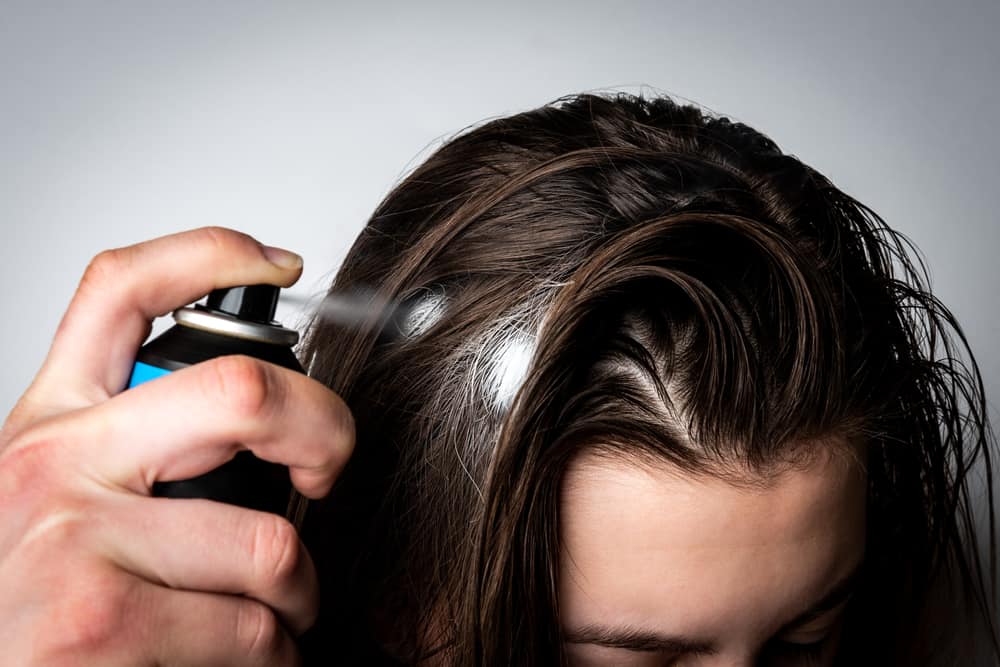
Want to understand oily hair and shampoos in greater detail before you go ahead and make a purchase? Since greasy hair often responds unpredictably to products, it goes without saying that you’ll want to do as much research as possible.
How Often Should You Wash Your Hair?
If you’ve ever ventured into the corner of the web that discusses “No Poo” (no shampoo), “Co Washing” (washing the hair with conditioner), or similar, you’ll know that many people advocate washing your hair as infrequently as possible.
Or, in some cases, not washing at all!
What’s the truth of the matter? Who can you trust? The short answer is that everyone’s different. But, while there are valid reasons to avoid nasty chemicals, don’t forget that it’s necessary for most people.
The scalp produces oils to moisturize itself as your hair; it’s a normal and inevitable part of life. This grease often attracts and traps in dirt, which we don’t want lingering about.
But isn’t the scalp self-cleaning if we leave it long enough, you might wonder? Not necessarily – this only really happens for those with coarse, dry hair. If you’re reading this, chances are that you don’t fall into that category.
There’s also pollution to contend with, which adds more dirt to the hair than we’d encounter in more natural environments.
If you struggle with greasy hair, the best option is probably to wash your hair every two or three days. You might even want to wash it every day if you exercise a lot or if the weather is hot – but make sure you use a daily shampoo like the Aveeno daily wash.
Types of Surfactants
Want to know more about surfactants, those all-important substances that give your hair that squeaky-clean look after you’ve just taken a shower? Of course you do.
Sulfates – like sodium lauryl sulfate, ammonium laureth sulfate, and sodium lauryl sulfate – are one of the strongest types, and also the most common. These come under the category of anionic surfactants.
But there are also more gentle types that don’t contain sulfates.
Some sulfate-free surfactants include:
- Acyl isethionates
- Acyl methyl isethionates
- Alkyl ether carboxylates
- Acyl glycinates
- Alkylamphoacetates
- Alpha olefin sulfonates
- Methyl sulfolaurates
- APG’s
- Betaines
- Fatty acid soaps
- Sarcosinates
- Sodium methyl acyl taurates
- Sulfosuccinates
- Sultaines
Phew! That’s a lot of hard-to-pronounce ingredients in one list. If you want to know exactly how strong a shampoo is before you go ahead with the purchase, you can find out using this online calculator.
As a general rule, we recommend Neutrogena for those wanting a stronger shampoo and Aveeno for a milder option.
Should I Choose a Natural Shampoo?
The popularity of natural cosmetic products has grown over recent years. Although there’s not a consensus over whether more synthetic options are harmful, many people believe that chemicals can damage and or irritate our skin – and even creep into our bodies.
Here’s a breakdown of the most common harmful ingredients so you can decide for yourself.
Parabens
Parabens are cheap preservatives found in many shampoos. Unfortunately, the skin can absorb parabens, leading to hormonal imbalance. Even worse, they’re linked to hair and scalp damage.
Silicones
Silicones help to keep our hair hydrated and prevent frizziness by stopping moisture from evaporating. This can give our hair a sleek look, but they can lead to the buildup of products since they’re not water-soluble, resulting in more greasiness.
Synthetic colors
Another common trick of haircare brands is to make “strawberry” shampoo bright pink or “tea tree” shampoo green with synthetic colors. They look great, but they’re another irritant – and may even inhibit growth in your hair follicles.
Luckily, there are natural options out there, like the WOW activated charcoal shampoo – it’s free from silicones, parabens, artificial colors, and even sulfates.
Choosing a Shampoo for Curly Hair
Anyone with curly, coarse, or afro hair will be more than familiar with the fact that most hair products on the market are targeted at their fine- and straight-haired counterparts.
These hair types work in very different ways. While sebum works its way down straight hair, creating a greasy effect, oils build up in the scalp of curly hair without traveling down – the grease is often invisible.
Still, it’s possible for curly hair to get oily. If you’re struggling with this, it might be because you’re touching your hair too often with your hands and transferring oil to the hair, or because your shampoo is so drying that your scalp must produce more oil to compensate.
So, instead of opting for a super-harsh shampoo, try something lighter like the HONEYDEW shampoo. You could also consider a dry shampoo.
Choosing a Shampoo for Color-Treated Hair
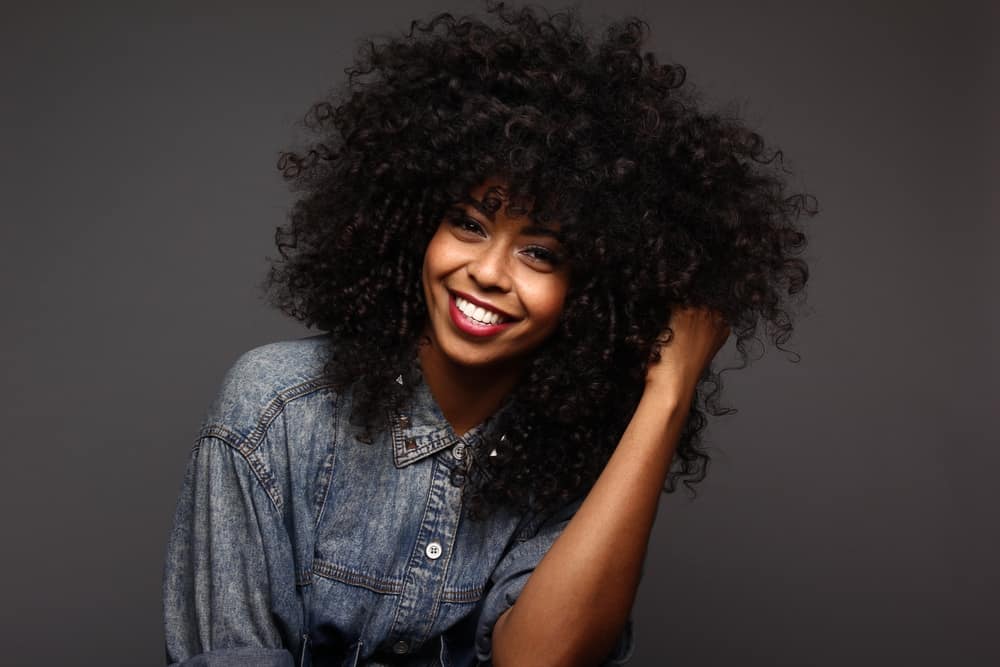
The pH of a shampoo affects the concentration of hydrogen ions in water. But what does this actually mean in practical terms?
In case you don’t remember much from your chemistry classes, a pH of 7 is neutral, while anything below is acidic, and anything above is alkaline. Generally, our scalp has a pH of 5.5, and our hair has a pH of 5 – and we want to keep things that way!
Choosing a shampoo that’s too alkaline can make our hair dry (grease is acidic and protects hair cuticles), but an overly acidic shampoo can make hair resist treatment.
Where are we going with this? For anyone with color-treated hair, choosing a more acidic shampoo helps to preserve the treatment, because it keeps the hair cuticles sealed. A great option is the BIOLAGE ColorLast shampoo.
Choosing a Shampoo for Hair With Dandruff
It’s a cursed combination, but if you have both dandruff and shampoo, take stock in the fact that it’s actually quite common – the two are closely linked.
When oil builds up on our scalp, microbes convert it into oleic acid. While oleic acid isn’t always harmful, some people are sensitive to it. As a result, they get struck by dandruff, or related symptoms like flaking and itching.
This means it’s especially more important to keep your hair clean – try the Maple Holistic anti-dandruff shampoo.
Anti-dandruff shampoos also tend to have antimicrobial and soothing properties.
Choosing a Shampoo for Fine Hair

Having delicate, thin hair might look nice, but it’s very sensitive and difficult to care for. Even worse, it gets greasy fast and irritated easily.
To look after your wispy strands, you need to keep cleanliness at bay while also avoiding irritation. It’s no easy task.
The BIOLAGE Volumebloom shampoo is ideal for fine hair thanks to its volumizing qualities and its gentle approach.
Also, be sure to give your scalp a thorough massage when applying shampoo, and never apply conditioner to the strands.
Choosing a Shampoo for Damaged Hair
There are lots of reasons our hair can get damaged. Maybe you used too much heat on our hair, chose a shampoo with overly harsh ingredients, or treated your hair too roughly when it was wet.
Don’t worry – this problem is fixable.
The right shampoo can help repair your hair cuticles (the part that protects each hair strand) by moisturizing and strengthening them.
We recommend the WOW shampoo for damaged hair. It’s free of most harmful ingredients and can help with restoring your hair.
But a good shampoo isn’t enough. You should also be gentle with your hair – avoid heat treatments for a while, comb your hair gently to detangle it, and pat your hair dry instead of pulling at it with your towel.
Should I Use Dry Shampoo?
You’d be forgiven for thinking that dry shampoo is just like regular shampoo but, well, dry. Of course, it’s not that simple!
A common tip for going longer between washes if you have greasy hair is to use dry shampoo, so a typical question is: Won’t dry shampoo also accustom my hair to needing frequent washes? The answer is no, because liquid and solid shampoos work in completely different ways.
Dry shampoos don’t contain surfactants that clean your hair – instead, they absorb oils. Great for an emergency pickup when you forgot to wash your hair but need to go out for the night; not so great if you actually want to keep your hair clean. It’s a purely aesthetic solution.
While it might sound great to give your hair the appearance of being dry while “training” your hair to go longer between washes, there are adverse consequences. Dry shampoo can irritate your scalp and make your hair dry.
FAQs
We can’t grant a miracle that will get rid of your oily hair forever, but we can answer a few common questions that people with greasy hair have. You’re welcome.
Are Shampoo Bars Good for Oily Hair?
Shampoo bars are an excellent choice. They wash the hair just as well as shampoo in a bottle can, but cut down on the wastefulness of plastic bottles. Just like regular shampoo, some shampoo bars are better suited for oily hair, while others are best for different hair types. We recommend the Ethique shampoo bar.
Will Dry Shampoo Help Oily Hair?
Dry shampoo is an excellent ailment for the appearance of oily hair and will dry your hair temporarily. But, to actually give your hair a proper clean and get rid of the oil forever, you need to use a proper shampoo.
How Often Should You Use Shampoo on Oily Hair?
There’s no single answer for how often you should wash your hair – everyone is slightly different. It’s generally advisable to wash your hair every two or three days if it’s oily, but there’s no magic number. Whatever you do, just don’t wash your hair every day with a deep cleansing shampoo designed for occasional use only.
Why Is My Hair So Oily?
There are a few explanations for oily hair. If you have naturally thin hair, grease will be fair more noticeable on you than on someone with thicker, curly hair – not because your hair is oilier, but because it has nowhere to hide. Grease can also be the result of absorbing pollution, hormones, unhealthy eating habits, or a harmful haircare routine. Whatever the case, there’s no point in beating yourself up about it – just try and look after your hair and choose a shampoo that works for you!
Time to Go Treat Yourself
When you suffer from greasiness, it’s easy to start seeing your hair as the enemy. There you are, trying to go about your daily life, when some oil-producing machine comes along to scupper your plans and ruin everything.
In reality, you and that “oil-producing monster” are a team! It’s only producing the oil that it thinks you need, and it can’t learn to behave better unless you nurture it properly.
Sick of that metaphor now? Us too. Basically, we’re just saying that if you look after your hair, it will look after you!
Many people struggle to justify buying a higher-quality shampoo when they see a $2 bottle next to it on the supermarket shelf. But if you’re going to invest in any beauty item, then let it be a decent shampoo! Even if the rest of you rolled out of bed and put on the first outfit you found, a lovely pair of locks can always be your saving grace.
There, you have our blessing. Go crazy!
